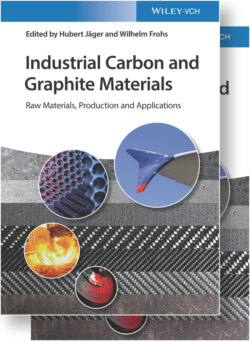Читать книгу Industrial Carbon and Graphite Materials - Группа авторов - Страница 31
3.4 History of Charcoal from Wood and Coke from Coal
ОглавлениеCharcoal is after carbon black one of the oldest forms of man‐made carbon, manufactured by carbonization of wood. It was used by Stone Age humans together with carbon black as color pigment for cave painting and since about 8000 BC for the reduction of metal ores, firstly for the production of lead and later on for copper, bronze, and iron. The Celts used since the La Tène Age around 500 BC shaft furnaces for smelting iron ores with charcoal as heating and reducing agent and marked with them the advent of the Iran Age also in Europe.
In the Modern Age, England was to be the forerunner in iron making and thus in the Industrial Revolution. Because of that, charcoal became relatively scant and expensive. In 1709, Abraham Darby I (1678–1717) was the first to successfully replace charcoal with coal coke in a blast furnace at the English Coalbrookdale ironworks [5].
With the strong growing of the iron and steel industry in the following centuries, coal coke as reducing agent in blast furnaces became – in terms of quantity – the most important form of technical carbon, but with inclusion of the ash‐forming inorganic parts of the crude coking coal. The history of coking techniques for coal has been published by some other handbooks [6]. Worldwide, in modern coking plants, more than 650 × 106 t blast furnace cokes are produced annually for iron smelting with more than ×106 t high‐temperature coal tar per year as by‐product (see Chapter 6.1.5). Therefore the coking of coal for the manufacturing of iron and steel is also an important process to maintain suitable forms of industrial carbon.
